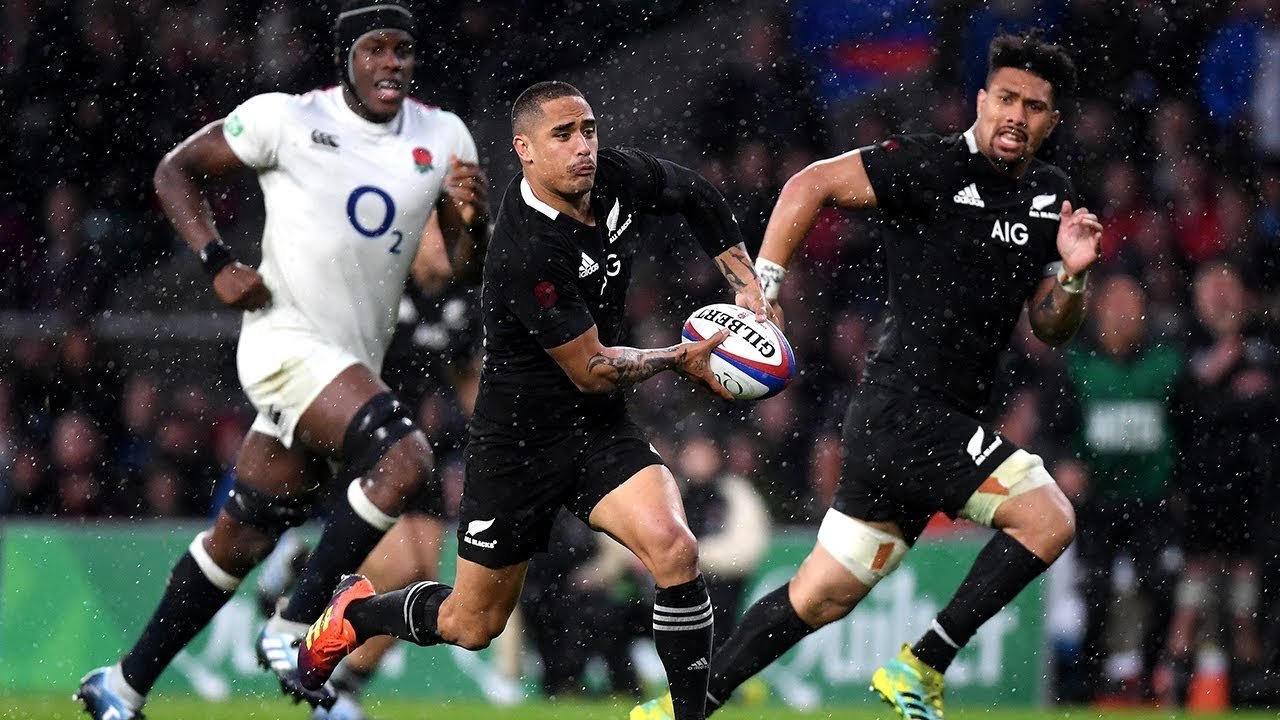 Rugby Union is an incredibly tactical and aggressive game. It is highly physically demanding, with impacts described as being “like a car crash” by many players. However, the aggression is balanced with speed and skill, with cheeky shoulder drops and explosive bursts forward bringing the crowd to their feet. Each position on the Rugby pitch is unique, therefore every player has a highly individualised role within the team. Rugby is extremely popular, meaning you can catch rugby of the highest quality in different locations across the globe. Here, we provide a quick taste of the rugby basics, giving an overview of the rules, some key terms and recommendations of who to see and where to see them.
Rugby Union is an incredibly tactical and aggressive game. It is highly physically demanding, with impacts described as being “like a car crash” by many players. However, the aggression is balanced with speed and skill, with cheeky shoulder drops and explosive bursts forward bringing the crowd to their feet. Each position on the Rugby pitch is unique, therefore every player has a highly individualised role within the team. Rugby is extremely popular, meaning you can catch rugby of the highest quality in different locations across the globe. Here, we provide a quick taste of the rugby basics, giving an overview of the rules, some key terms and recommendations of who to see and where to see them.
Country of Origin: Famously, Rugby is said to have been invented by William Webb Ellis and developed in Rugby, England. In 1888, a British Isles team toured New Zealand and Australia, and this was instrumental in the spread of the game globally. Today, there are over 100 countries affiliated to World Rugby.
 Background: According to legend, in 1823 William Webb Ellis picked up a football and ran with it, and hence rugby was born. Half a century later, the first international was played between Scotland and England. However, it wasn’t until the 1980s that rugby began to become more commercial and professional with the first Rugby World Cup taking place in 1987, with the women’s tournament following four years later. Rugby was considered an amateur sport until 1995.
Background: According to legend, in 1823 William Webb Ellis picked up a football and ran with it, and hence rugby was born. Half a century later, the first international was played between Scotland and England. However, it wasn’t until the 1980s that rugby began to become more commercial and professional with the first Rugby World Cup taking place in 1987, with the women’s tournament following four years later. Rugby was considered an amateur sport until 1995.
The Rules: A rugby team is made up of fifteen players who attempt to advance an oval-shaped ball from one end of a rectangular pitch to the other. At either end of the pitch are large, 5 metre H-shaped posts. Points are scored by kicking the ball over the posts or by placing the ball in the zone behind the posts which spans the width of the pitch. The team with the most points at the end of 80 minutes wins. A rugby game consists of two halves of 40 minutes. The clock is paused during stoppages, meaning there are no controversies with the length of additional time, as is sometimes the case in sports such as football.
Players advance the ball up the pitch by running with it, kicking or throwing. Players cannot throw the ball forwards: it must go sideways or backwards, hence why rugby teams advance forward in a diagonal line. Players can be prevented from running with the ball by tackling during which they are held on to and brought to the ground by their opponents. A tackle must be below shoulder height. Failure to release the ball after being tackled results in the awarding of a penalty.
Players can be shown red and yellow cards for dangerous fouls. A yellow card results in them being sent to the sin bin, meaning they are suspended from the game for 10 minutes, whilst a red card means they are sent off for the remainder of the game.
A bench in rugby union is made up of eight players, and the coach can opt to use up to all eight or none at all. There are two types of substitutes in rugby: permanent or temporary. Permanent substitutes mean the player replaced cannot return to the field. Temporary substitutes are used to replace players who are forced to briefly leave the field injured. The injured player can then return to the field and replace the temporary substitute once more.
Scoring: A try is worth five points. This is scored by placing the ball in the zone behind the H-shaped posts. The team who score the try can then kick the ball through the posts from any position directly opposite where the try scored. This is known as a conversion and is worth a further two points. Kicking the ball through the posts in open play is known as a drop goal and is worth 3 points. Penalties are worth 3 points and are awarded when the opposition break the rules of the game. To secure the penalty points the kicker must kick the ball through the posts.
Key Terms:
Ruck – when the ball is on the floor and two or more players on their feet form around it. Players cannot touch the ball with their hands, the ball is moved with their feet.
Maul – when the player in possession of the ball is held by more than one opposition player, in addition to at least one of their teammates. The team in possession progress forward with the ball by driving their opponents backwards. The ball must be off the ground.
Lineout – the rugby equivalent to a football throw-in, is awarded against the team who touched it last when the ball leaves the pitch. The ball is thrown back into play and players from each side compete for the ball, often lifting their teammates.
Scrum – a method of restarting play after an infringement, and one of the highlights of a rugby match. A scrum is made up of eight forwards from each team. They bind together in three rows. The two hookers compete for the ball by hooking it backwards using their feet, whilst the two teams push each other. The team that gains possession then move the ball to the back of the scrum, and play resumes.
Positions: A rugby team is made up of 8 forwards and 7 backs.
Backs:
Full-back – Considered the last line of defence. Need to have excellent catching skills as full-backs often receive long kicks down field from the opposition. Must be able to accurately kick the ball a long distance and have a good reading of the game.
Inside and Outside Centre – Good readers of the game, capable of exposing gaps in the opposition backline. Strong and powerful, good at creating chances for their teammates as well as having defensive responsibilities. The inside centre is more creative, better at passing and kicking, whilst the outside centre is quicker.
Wing (x2) – Responsible for finishing off moves and scoring tries, pace is their major asset.
Fly-half – arguably the most pivotal position with every attack going through the fly-half. The metronome of the team, possessing composure and vision and who is responsible for deciding when to pass and when to kick. Normally the team’s most accomplished kicker. Controls the back line.
Scrum-half – the link between the forwards and the backs. A real playmaker on the field, requiring exceptional awareness as they are responsible for controlling when the ball is played out from a scrum, ruck or maul. Small and quick with sharp reactions.
Forwards:
Flanker (x2) – real allrounders with boundless energy. Strong and fast with excellent tackling and handling abilities who are responsible for tackling the opposition and stealing the ball. There are two types of flanker - a blindside flanker - responsible for covering the narrower side of the scrum, their aim in attack is to carry the ball and build momentum, and in defence they are responsible for making tackle after tackle - and an openside flanker - responsible for the side of the scrum furthest away from the touchline and during the breakdown of the scrum they aim to get over the ball and steal or win a penalty.
Number 8 – forms the backrow with the two flankers. Support play, ball carrying, and tackling are their main duties and is the player who can pick the ball up from the base of the scrum.
Locks (x2) – Tall and powerful, they are known as the engine room of the scrum. Excellent catchers and tacklers.
Hooker – Orchestrates the timing of the scrum. Responsible for winning the ball in the scrum and throwing in to lineouts.
Loose End and Tight End Prop – combine with the hooker to form the front row in the scrum and therefore, required to be fiercely strong. Strength utilised in attack: often used as a battering ram to create space for the more agile players.
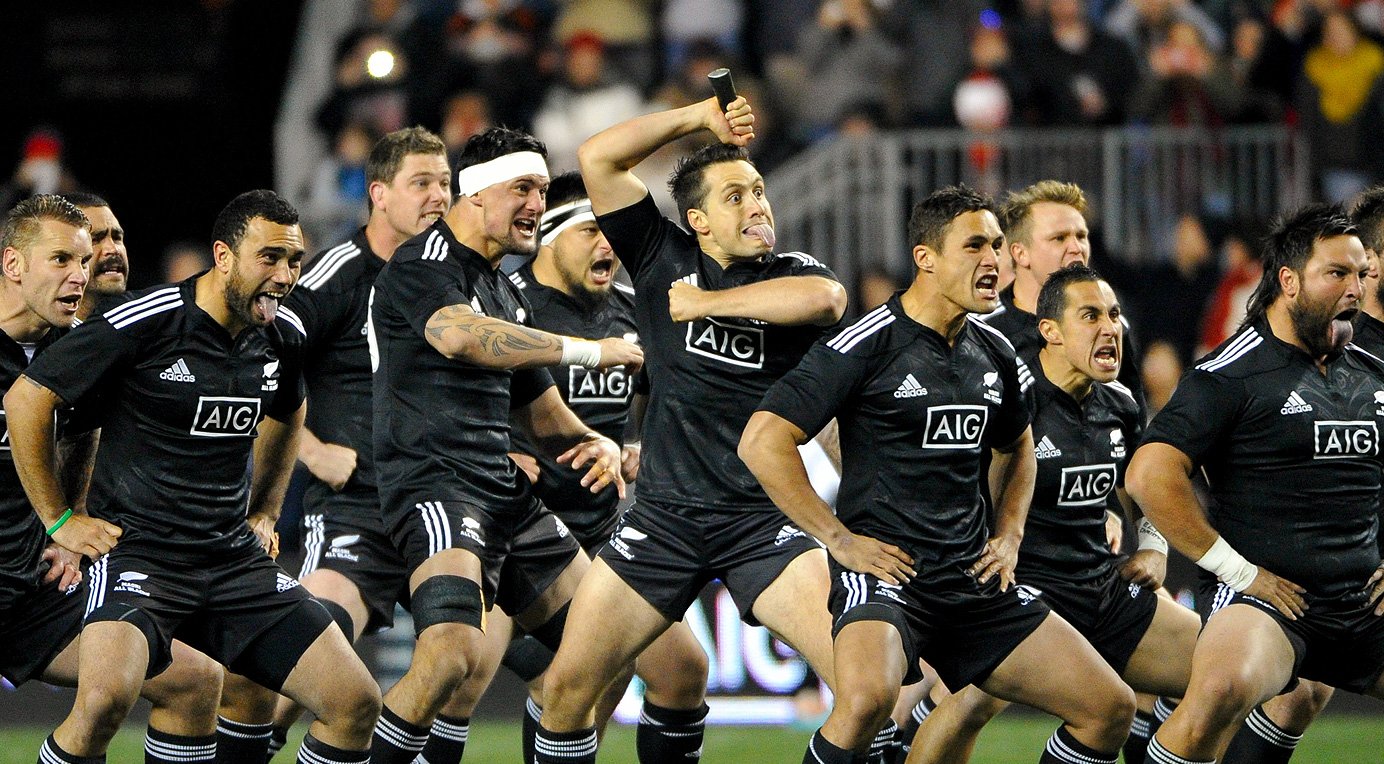 Quirks of the Game
Quirks of the Game
The Haka is a world-famous ceremonial dance performed by the New Zealand rugby team before each fixture. Filled with stamping and grunting, it aims to intimidate and instil fear into the hearts of opponents. Witnessing the Haka in the flesh is a sporting must see.
Rugby is an incredibly technologically advanced game and has always been ahead of other sports when it comes to technology equipment. All players have GPS trackers in their shirts to record player performance, such as distance covered during a game and total number of accelerations and decelerations. This was first used to track referees, and was implemented by Ireland in 2007/08, with many other sides quickly following suit.
Television Match Officials (TMO) was first implemented in 2001, and is used to assist referees. They help with decisions such as determining whether a try is legitimate, determining whether a kick at goal has been successful and for observing acts of foul play. TMO uses Hawk-Eye, allowing the game to be seen from different angles in order to get the best possible view for a decision.
Referees have microphones attached to their shirts so that audiences can hear them talking to players and their decisions being explained. As a result, rugby players are incredibly respectful towards officials. This can make for amusing watching, as one minute a giant rugby player will be charging into tackles with brute force, and the next he will be towering over the referee, calling him “sir” and apologising.
Competitions
The pinnacle of international rugby is the Rugby World Cup. This has taken place every four years since 1987. The tournament currently consists of 20 teams sorted into four pools of five with the top two nations from each side progressing to the quarter-finals. The Rugby World Cup final is a highlight on any sporting calendar. Over 80,000 supporters flocked to Twickenham for the 2015 final, where the illustrious Webb Ellis Trophy was handed to New Zealand. The competition’s popularity has boomed, with nearly 2.5 million spectators attending the 2015 tournament.
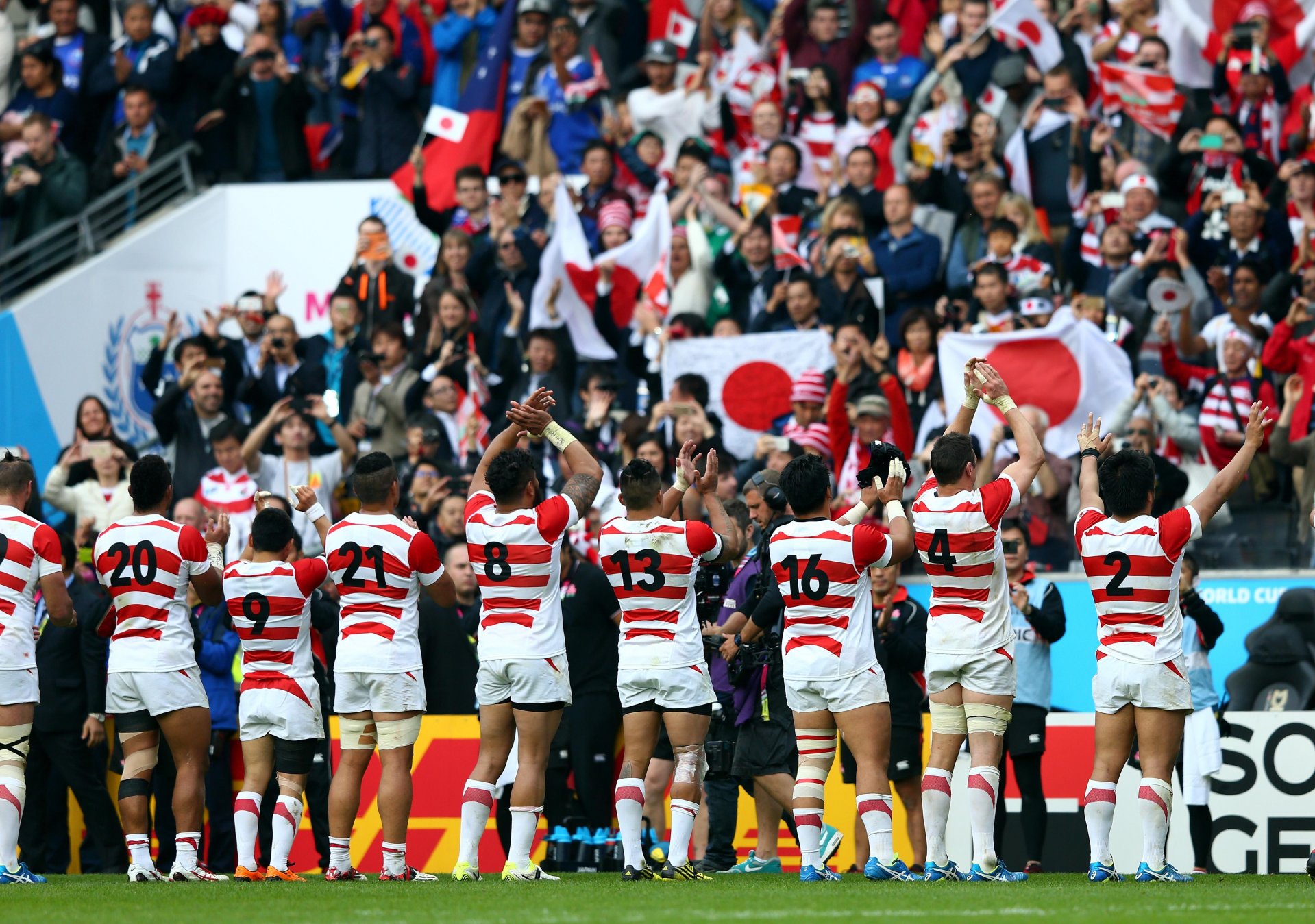 The 2019 World Cup will take place between September and November, and the world’s Rugby elite will descend upon Japan. This is the first time the competition has been held in Asia. Current holders New Zealand will be looking to add one more win to their record three titles.
The 2019 World Cup will take place between September and November, and the world’s Rugby elite will descend upon Japan. This is the first time the competition has been held in Asia. Current holders New Zealand will be looking to add one more win to their record three titles.
The Women’s Rugby World Cup’s inaugural tournament took place in 1991. The tournament is currently made up of 12 teams which are split into three pools where each team plays each side in their pool. All 12 teams are then sorted into a league table according to their points total and the top four sides progress into the semi-finals. Media coverage and exposure of the women’s game has improved considerably, with the latter stages of the competition shown on terrestrial television in England, France and the United States.
Like their male counterparts, New Zealand are the most decorated nation in the competition’s history with five titles to their name, most recently in 2017. The 2021 tournament will take place in Australia.
The Six Nations is an annual tournament between England, Wales, Italy, France, Ireland and Scotland. Originally called the Home Nations when it began way back in 1883, before France (in 1910) and then Italy (in 2000) joined, it is steeped in history and ancient rivalries. Each side plays each other once, with 4 points awarded for a win, 2 for a tie and 1 for losing by 7 points or fewer or for scoring four or more tries in a match. The countries are put into a league table accordingly, with the side that tops the table crowned champions of the Six Nations. With bumper crowds and deep-seated rivalries, the Six Nations is always an epic six weeks. A country that wins all five games wins the ‘Grand Slam’, whilst the home nations can also win the Triple Crown, when they win all their matches against their fellow home nations. The side that finishes bottom of the pile are awarded the Wooden Spoon. Wales and England are the most successful sides in Six Nations history - Wales have 39 victories, 27 of which were outright and England have 38 victories, 28 of which were outright.
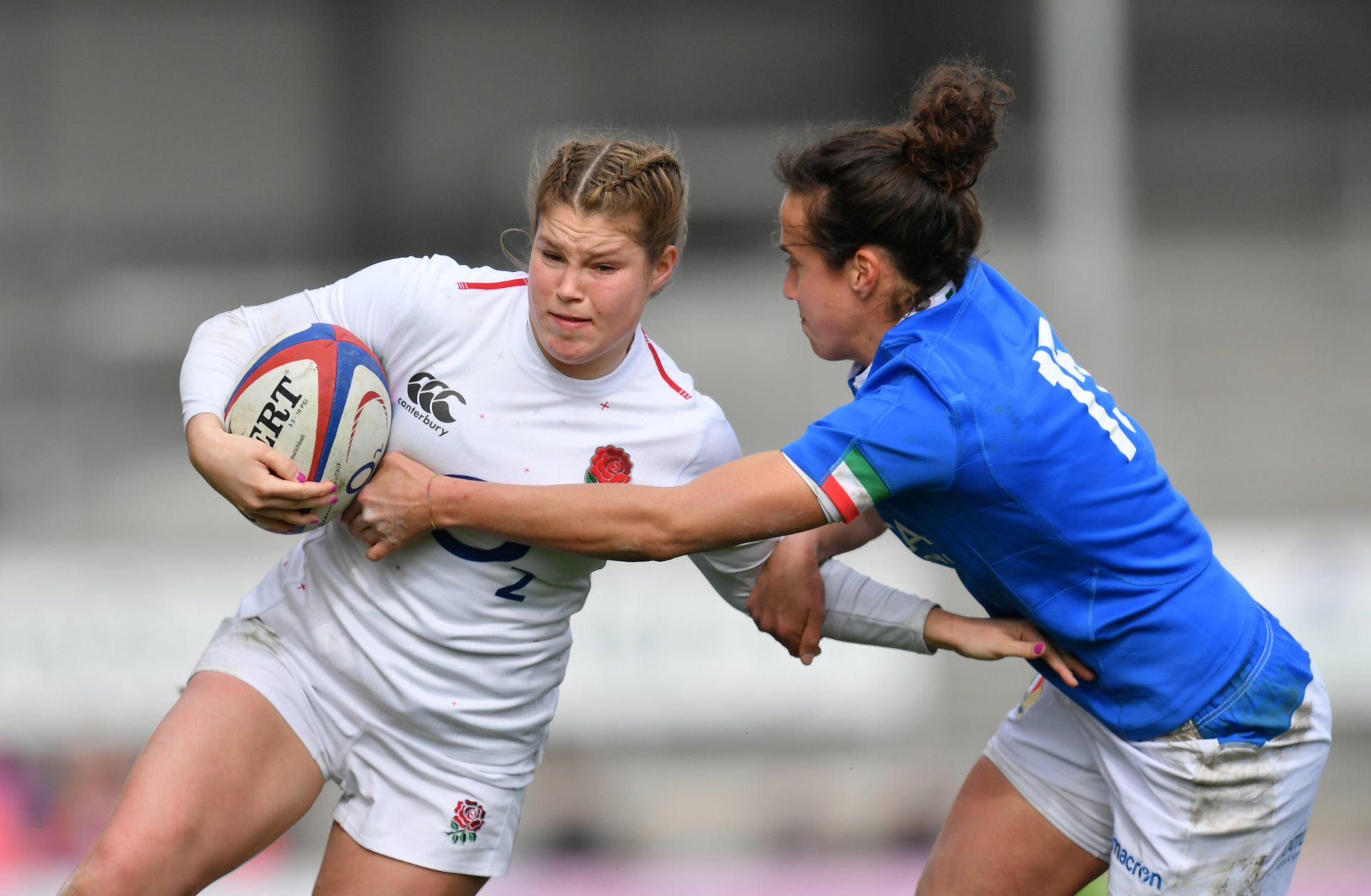 The Women’s Six Nations also began as an exclusive home nations tournament in 1996, prior to the additions of France in 1999, and Spain in 2000. In 2007, Italy replaced Spain so that the competition format mirrored the men’s edition. England are the most successful side with 24 titles to their name, with 15 outright wins, 14 of which have been Grand Slams.
The Women’s Six Nations also began as an exclusive home nations tournament in 1996, prior to the additions of France in 1999, and Spain in 2000. In 2007, Italy replaced Spain so that the competition format mirrored the men’s edition. England are the most successful side with 24 titles to their name, with 15 outright wins, 14 of which have been Grand Slams.
The Rugby Championship is an annual international rugby tournament that takes place in the Southern Hemisphere. Argentina, New Zealand, Australia and South Africa are the four sides who compete, playing each other home and away (although this is reduced during World Cup years). The championship began in 1996 and was originally called the Tri-Nations, prior to the introduction of Argentina in 2011. New Zealand have the most titles, with 10 Tri-Nations wins and 6 Rugby Championship victories.
Rivals New Zealand and Australia annually compete in a three-game series for the Bledisloe Cup. This dates back to the 1930s, and consists of the two Rugby Championship fixtures and one further match. The All Blacks have more series wins than Australia holding the title 47 times compared to Australia’s 12 times.
The three major rugby club leagues in Europe are the Pro 14, Top 14 and Rugby Premiership.
As its name suggests, Pro 14 is made up of 14 teams from Ireland, Wales, Italy, Scotland and South Africa. The league changed from Pro 12 to Pro 14 in 2017 with the addition of two South African sides. Teams are split into two seven team conferences. Teams play every team in their conference home and away, and each team in the opposite conference once. They also play two further matches against the teams from their nation in the opposite division. The top three sides from each conference progress to the playoffs: a knockout style competition culminating with the final. Irish side Leinster are the most successful side since the league began in 2001, winning their sixth title in the 2018/19 season.
The Premiership’s inaugural season was in 1987, and it consists of 12 English sides. This follows a normal league format, with the top four sides progressing to the playoffs at the end of the season. There is also relegation and promotion to and from the RFU Championship, the division below. Leicester Tigers are the most decorated Premiership side, with 10 titles.
The Top 14 is the pinnacle of French club rugby. The league is steeped in history, dating back to 1892. The division consists of 14 teams, promotion and relegation, and an end of year playoffs for the top six sides. Toulouse are the most successful side in the league’s history, with 20 titles.
The European Rugby Champions Cup is the rugby union equivalent to the Champions League, boasting the highest quality rugby on the continent. 20 sides from the Pro 14, Top 14 and the Premiership take part. The teams are currently drawn into five groups of four, and each team plays the other sides in their group, home and away. The five teams that top the groups progress into the quarter finals, along with the top three second placed sides. The final is played during May in some of the biggest stadiums across Europe. The Stade de Marseille will play host to the 2020 final, and the Tottenham Hotspur Stadium is the destination for the 2021 showpiece conclusion. English side Saracens are the current holders, whilst French outfit Toulouse and Leinster of Ireland are the most successful sides in the competition’s history since both have lifted the trophy on four occasions.
Super Rugby is a hugely popular Southern Hemisphere based Rugby Union competition between club sides from Argentina, Australia, Japan, New Zealand and South Africa. There are three conferences: a New Zealand one, a South African one, which includes an Argentinian team, and an Australian conference including a Japanese side. Teams play all four other teams in their conference home and away, alongside playing four out of the five teams from each conference once. The conference topping sides progress to the quarterfinals, along with the five teams with the most points. The competition has been dominated by New Zealand sides, with current holders Crusaders claiming their tenth title during the 2019 season.
Rugby Sevens: A variant of rugby union is rugby sevens: seven-a-side rugby, with seven minute halves.
There are slight variations to the rules to account for the reduced number of players. Scrums are made up of three players, conversions are all taken as dropkicks and the team who scores kicks off (as opposed to the team who concedes, as per regular rugby rules). As a result, the game is faster paced than regular rugby, and incredibly exciting.
It has been played since the late 1800’s, and the Rugby World Cup Sevens first began in 1993, with the women’s tournament introduced in 2009. Like the Rugby World Cup, this is played every four years. New Zealand are the most successful nation; the men’s team have three titles and the women’s side two.
Such is the popularity of rugby sevens, it was introduced into the Olympic Games in 2016. Fiji took the gold medal in the men’s event, with Australia topping the podium in the women’s event.
All Time Great Sides
It is impossible to talk about the greatest ruby teams of all time without mentioning the New Zealand All Blacks. With so many phenomenal teams to choose from, it is difficult to select just one New Zealand side but the 2015 squad are in a league of their own. To secure consecutive World Cups is one thing, but to win the World Cup in the manner they did, beating a very good Australia side 34-17 in the final, gives them an edge when compared to others. In the quarterfinals, Australia battered France 62-13, marking the biggest margin of victory in a World Cup knockout match since 1987.
Such is the formidable nature of the All Blacks throughout the course of rugby history that any side that overcomes them must be pretty special themselves.
The British and Irish Lions team of 1971 has been labelled the side who triggered an awakening of British rugby. Coached by the revolutionary Carwyn James, The Lions won their first ever Test series 2-1. To do it in New Zealand’s own back yard was an element which added to the formidable achievement.
England’s 2003 side were considered the strongest in the world and iconic captain Martin Johnson lifted the World Cup in 2003 to confirm their status as the world’s best. Coached by Clive Woodward, a man obsessed with small gains and intricate margins, England beat Australia 20-17 in the final. Jonny Wilkinson’s kick to win the game with his weaker right foot with just 20 seconds remaining will forever be ingrained in sporting history.
All Time Great Players
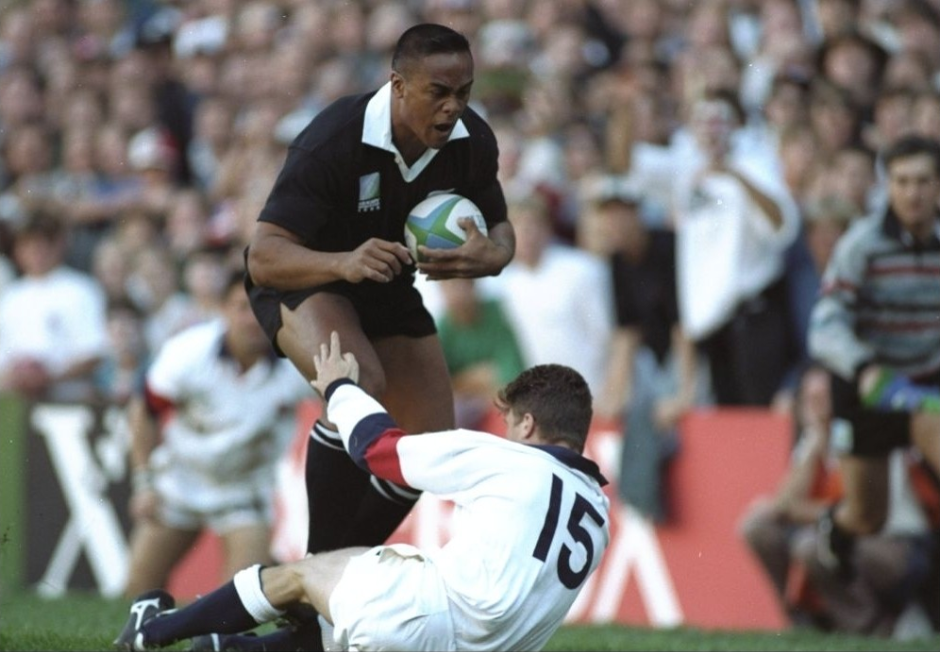 Many consider Jonah Lomu the reason rugby became popular in the mainstream. Lomu had everything; he was fast, strong and powerful, and despite his huge build, he was incredibly agile. Preventing him from marauding down the field was a near-impossible task, with players seemingly bouncing off him such was his superior strength. Lomu played wing for the All Blacks, and was selected for the 1995 World Cup, despite only having two international caps and being just 20 years old. He set the tournament alight scoring seven tries, including four in the semi-finals as New Zealand went all the way into the final, before losing to South Africa. Lomu changed the face of rugby worldwide, consolidating himself as a great of the game.
Many consider Jonah Lomu the reason rugby became popular in the mainstream. Lomu had everything; he was fast, strong and powerful, and despite his huge build, he was incredibly agile. Preventing him from marauding down the field was a near-impossible task, with players seemingly bouncing off him such was his superior strength. Lomu played wing for the All Blacks, and was selected for the 1995 World Cup, despite only having two international caps and being just 20 years old. He set the tournament alight scoring seven tries, including four in the semi-finals as New Zealand went all the way into the final, before losing to South Africa. Lomu changed the face of rugby worldwide, consolidating himself as a great of the game.
Outside centre Brian O’Driscoll is Ireland’s highest try scorer. O’Driscoll spent the entirety of his playing career at club side Leinster, and he captained his country for nine years, as well as captaining the British and Irish Lions during a 2005 tour. Nippy and with explosive speed, O’Driscoll was famed for charging towards the goal line, whilst opposition defenders seemingly melted away thanks to his sheer pace and agility. If there was just the smallest gap between two defenders, O’Driscoll would exploit it. He was voted player of the tournament after a hat-trick of Six Nations in 2006, 2007 and 2009, and he is the tournament’s all-time top try scorer.
Gareth Edwards is considered by many as the greatest player to ever grace the Rugby field. The Welsh legend played scrumhalf during 1960’s and 70’s, guiding them to three Grand Slams with his incredible athleticism, balance and speed. Additionally, Edwards is Wales’ youngest ever captain, taking the armband at the tender age of 20. His try for Barbarians against the All Blacks in 1973 is regarded as the greatest try in the history of Rugby: Edwards finished off a remarkable team move with a sublime showing off his trademark explosive speed.
Lawrence Dallaglio was a superb number 8 and flanker for England, and was an integral part of the 2003 World Cup-winning team. He is considered the greatest number 8 to ever wear the England shirt. Dallaglio was a phenomenal ball carrier, with incredible strength and determination. He was an absolute man-mountain, and enjoyed a glittering career spanning nearly 20 years. Dallaglio went on to win 85 caps for his country, and spent the entirety of his club career at Wasps, making over 200 appearances for his boyhood club.
Super Rugby’s all-time leading points scorer Dan Carter is regarded as rugby’s greatest ever fly-half. He was a key cog in the All Blacks 2015 World Cup-winning team, and was named man of the match in the final against Australia having shown nerves of steel and remarkable composure to kick four penalties, two conversions and a drop goal. Carter is one of the finest kickers in world rugby, and his tactical awareness, bravery and strength in the tackle have made him one of the games all-time greats.
Dan Carter’s long term teammate Richie McCaw has gone above and beyond anyone else in terms of achievements on the pitch. The openside flanker is the most capped test rugby player of all time, amassing 148 appearances for New Zealand between 2001 and 2015 during an international career that included captaining the All Blacks to consecutive World Cup wins. His ability to read the game set him above and beyond the rest. McCaw was renowned for his bravery and willingness to fly into tackles, with his opponent predominantly coming out second best. McCaw pushed his body to the absolute physical limits; to manage to do this and maintain levels of consistent excellence for 148 caps is a testament to what a phenomenal athlete McCaw is.
Maggie Alphonsi played flanker for England and Saracens during her sparkling 11-year career. She became the first woman to win the prestigious Pat Marshall Award in the 50-year history of the sports writer’s award. Alphonsi was an integral part of the England side who lifted the World Cup in 2014. Solid in the tackle and furiously fast and strong, she has been the pioneering face for the rise in the women’s game in the UK.
Players to Watch
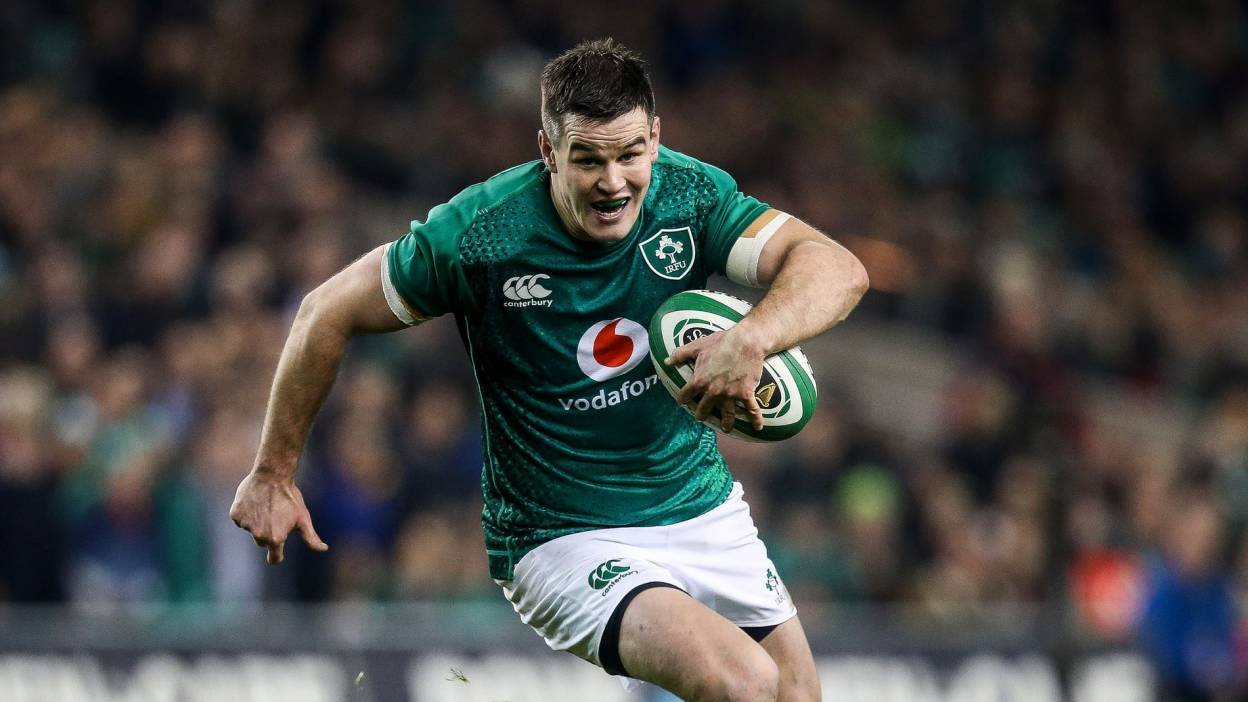 Leinster and Ireland flyhalf Johnny Sexton won the World Rugby Player of the Year in 2018 and has scored over 700 points during a glittering international career. A superb kicker with a frightening burst of acceleration, he is one of the most remarkably consistent Rugby players in the worlf. Sexton has won the European Champions Cup and Six Nations on four occasions, including being a key cog in Ireland’s Grand Slam in 2018.
Leinster and Ireland flyhalf Johnny Sexton won the World Rugby Player of the Year in 2018 and has scored over 700 points during a glittering international career. A superb kicker with a frightening burst of acceleration, he is one of the most remarkably consistent Rugby players in the worlf. Sexton has won the European Champions Cup and Six Nations on four occasions, including being a key cog in Ireland’s Grand Slam in 2018.
Malcolm Marx is widely regarded as one of the world’s best hookers. The young South African burst onto the International scene in 2017 and turned the heads of fans and pundits alike after an assured performance against the world’s best New Zealand. Marx is a deadly ball carrier; so strong, powerful and determined, and will be sure to explode further onto the world stage at this year’s World Cup.
French fullback Jessy Tremouliere won the 2018 World Rugby Player of the Year. Quick, agile and a dependable kicker, she helped to guide France to the Six Nations title in 2014. Tremouliere currently plays for club side Romognat in France.
England number 8 Billy Vunipola is one of the most watchable players in world rugby. His tenacity and hunger are a joy to behold; from charging down the pitch one minute, to flying into a challenge the next, he is guaranteed to bulldoze everyone and everything in his way. He has been an integral part of the hugely successful Saracens side in recent years, and will be hopeful of continuing this form come the World Cup in September 2019 for England.
New Zealand flyhalf Beauden Barrett is one of the most skilful players in the game. His inventiveness and creativity make him such a fascinatingly unpredictable player. Barrett boasts incredible flair and pace; it is a foregone conclusion when you see Barrett with his head down, scampering towards the try line. But what makes Barrett such a superb player is the way he makes every subtle skill he pulls off look so effortless.
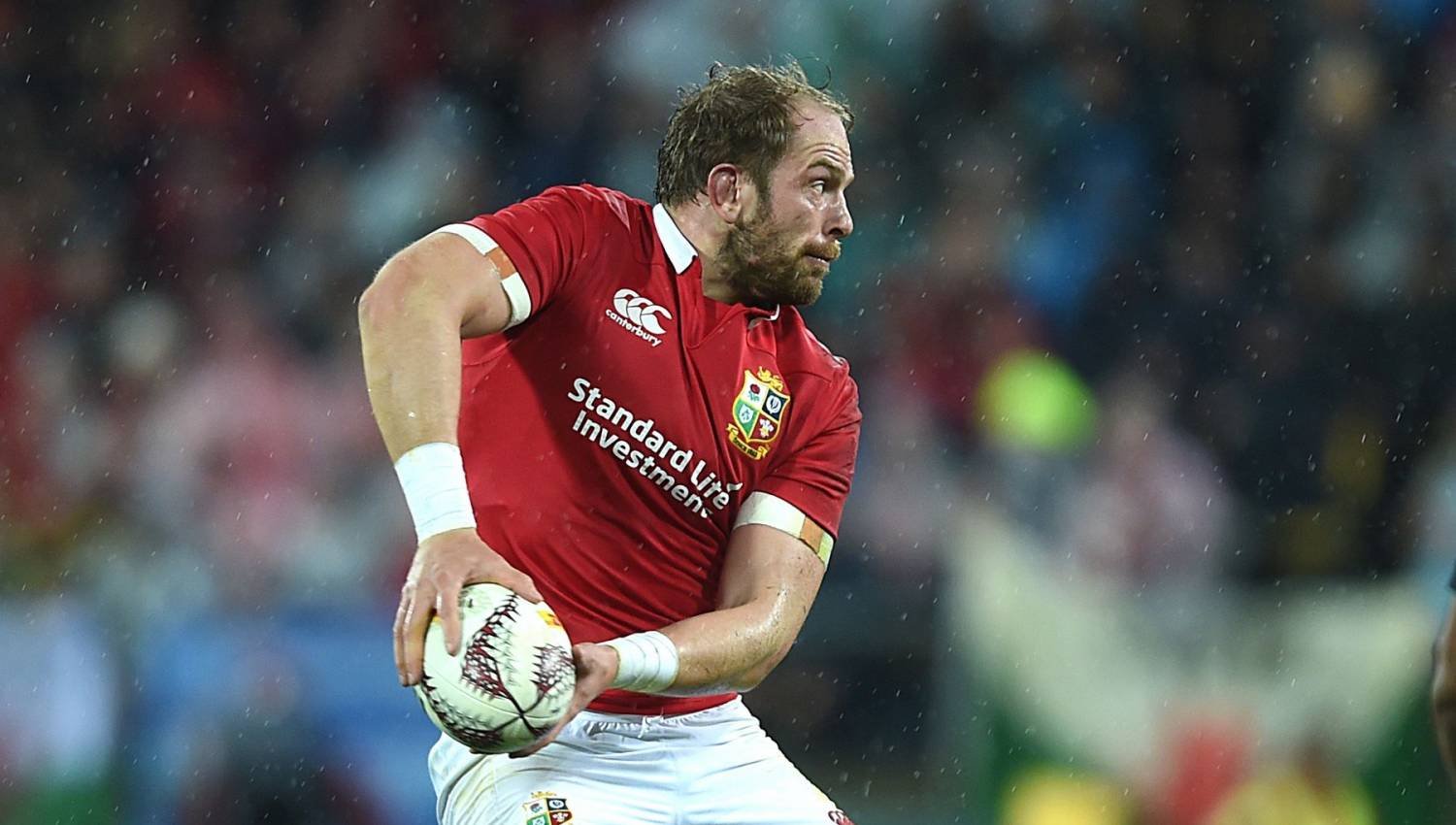 Wales captain Alun Wyn Jones was rightly named 2019 Six Nations Player of the Tournament after leading his side to a Grand Slam at the championships. Intelligent, brave and a superb ball carrier, Wyn Jones thrives during the biggest moments on the biggest occasions. He is the world’s most capped lock-forward, and one of the most dependable players in the game.
Wales captain Alun Wyn Jones was rightly named 2019 Six Nations Player of the Tournament after leading his side to a Grand Slam at the championships. Intelligent, brave and a superb ball carrier, Wyn Jones thrives during the biggest moments on the biggest occasions. He is the world’s most capped lock-forward, and one of the most dependable players in the game.
Where to See It
 The iconic Twickenham in London is an absolute must-visit. Affectionately nicknamed “Twickers”, it has been the home of English Rugby since 1907. Boasting 82,000 seats, Twickenham is simply spectacular, and when full there is no atmosphere quite like it. Fixture can help plan your trip there.
The iconic Twickenham in London is an absolute must-visit. Affectionately nicknamed “Twickers”, it has been the home of English Rugby since 1907. Boasting 82,000 seats, Twickenham is simply spectacular, and when full there is no atmosphere quite like it. Fixture can help plan your trip there.
Ellis Park in Johannesburg is famed for hosting the 1995 World Cup final, where underdogs South Africa were crowned champions as Nelson Mandela famously handed them the trophy. The stadium has a capacity of 62,000, and in 2005 it became the first black-owned stadium in South Africa.
The Aviva Stadium in Ireland has a beautiful curved roof, making it one of the most scenic places to catch a Rugby match. When filled with a green wall of 51,000 Ireland fans, the atmosphere is unbeatable.
The Principality Stadium (formally the Millennium Stadium) in Cardiff is an iconic sporting stadium, and is a fabulous place to watch rugby. Built-in 1997, the stadium is a great blend of modern and old fashioned. It is located on the River Taff, making the walk to the stadium beautifully picturesque. With a 74,500 seater capacity, the atmosphere at the Principality Stadium is electric.
Eden Park in Auckland is home to the formidable All Blacks and is the largest sport stadium in New Zealand. It is steeped in history, with all New Zealand’s greatest sides gracing the turf since it opened in 1900. With a magnificent three tiered grandstand, witnessing the All Blacks play at Eden Park should be at the top of any sport fans’ bucket list.
Written on 1st September 2019
Photos by All Blacks, Rugby School, Rugby World Cup, England Rugby, Ireland Rugby, Wales Rugby, Twickenham
Contact us to organise your next trip